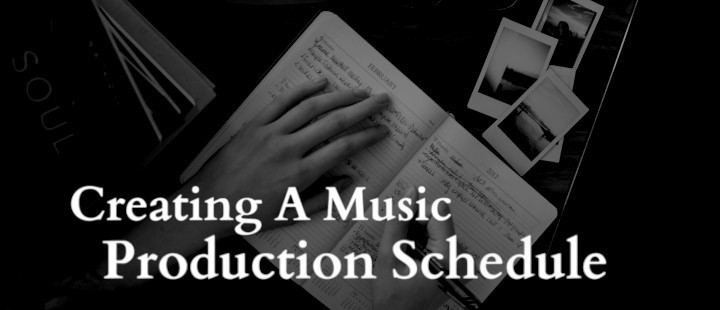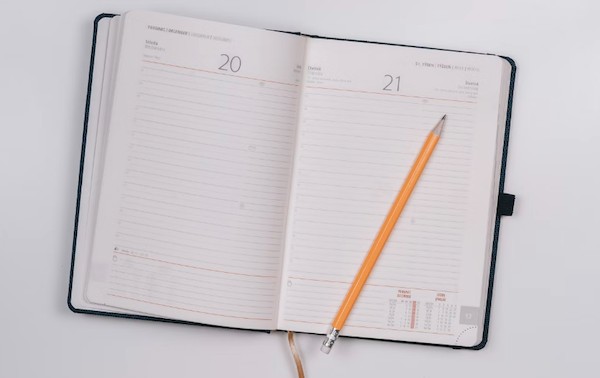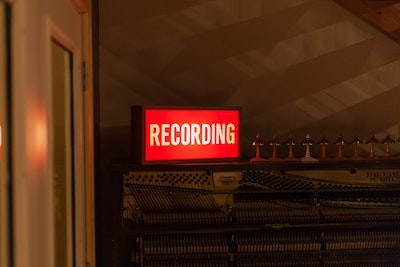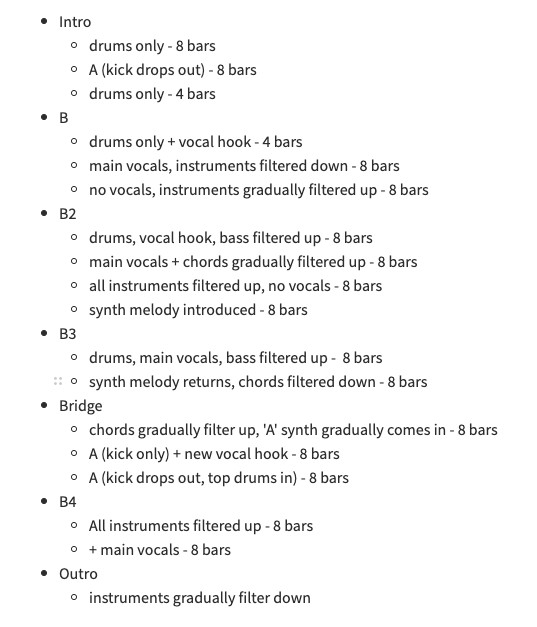
So, you've put a decent chunk of time into your music production journey, and you no longer consider yourself a total beginner. But something's changed - your DAW sessions now often hit roadblocks, and you feel like you're suffering a dearth of creativity or inspiration.
Well congratulations, this is a sign that you're ready to level up as a producer - now is the time to add some professionalism to your process by creating a music production schedule.
Too often we think we need to make a beat or whole track when we sit down with our music equipment, and this kind of experimentation is fine when you're just starting out and feeling your way around your equipment.
But eventually this approach is going to get tiresome, because more often that not each DAW session will not result in a finished track, and this could dishearten or demoralise you over time.
There are many different disciplines and skills that contribute to a finished track, and with a music production schedule we can break these down into chunks and allocate time to them separately.
With this structured approach, you can be sure that your production skillset will be constantly sharpened, and ultimately, you'll see how you become more prolific in making music, in terms of both quality and quantity.

In this article, I'm going to offer a suggestion for a schedule you can follow. It is spread across 5 days, so can be used as a weekly cycle, but you can space them out however you like depending on the spare time you have available.
The point is that each session is distinct from the others, and your focus is solely on one aspect of the production process at each stage.
Here's the short version:
Day 1 - Learn an instrument or plug-in
Day 2 - Record ideas and loops
Day 3 - Study song arrangement
Day 4 - Arrange a track
Day 5 - Mix your track
And now for a deeper dive into each section!
Day 1 - Learn An Instrument Or Plug-In

This session is going to be completely devoted to learning how your equipment works. More specifically, how one piece of equipment works. This can be a piece of hardware, a soft synth (like Serum), or an FX plugin, and your goal is to become a ninja with it.
We think it's better to learn one synth inside out, but you could choose a different bit of kit each time if you want. Learning a few bits of gear really well will help establish 'your sound' as opposed to bringing in new synths every time you produce.
The great thing about this session is that you can take the experimental approach and just feel your way around, or you can get nerdy with it and whip out the manual (it may seem boring, but you can often find good stuff in there).
This is also a great time to create your own patches. If you come up with a cool sound on your synth, or an interesting FX chain, make sure you save these as presets in a dedicated folder.
Day 2 - Record Ideas And Loops

Now is the time to hit the record button, and this is a great opportunity to put your newfound skills from day 1 to work. The goal here is to create a bank of loops and ideas that we can draw from over time.
There are a few ways to approach this. You can focus on one synth or plugin and create a set of unrelated ideas on that; you can record a selection of loops based on instrument groups, such as basslines or drum beats; or you can build up a loop that includes a variety of instruments.
Don't run away too much with trying to create a full track though, as the focus here is more on recording ideas and snippets of music. One advantage here is that you can load up on more plugins, as you should have more CPU power available (though don't do it just for the sake of it!)
Export your loops (or one shots) as high quality WAVs, and make sure to give them a meaningful name with the key and BPM included if possible (e.g - Funky_Synth_Riff_110_Gm), and store in a dedicated folder for your loops.
This session will allow you to build up a bank over time that will give you an ever deeper source to draw from. You'll find that snippets you created months, even years ago, will miraculously fit into a new track you're working on.
Day 3 - Study Song Arrangement

This session may be the least glamorous on the surface, but it is a hugely important skill that is overlooked by most producers, and could give you a real edge if you dedicate time to it.
Turning an 8 bar loop into a full arrangement is a big challenge, and many bedroom producers hit a brick wall here. This step is key in helping to bridge that gap.
In this session, you'll be actively listening and analysing the arrangement of one of your favourite tracks. Listen closely to the structure, several times if need be. Pay attention to when and how different musical elements are introduced and dropped, and how it makes you feel as a listener - the arrangement is key in taking the listener on a journey.
Try to create a visual representation of the structure you've studied. You can refer to different sections with letters or numbers, or use descriptive language such as "main hook" or "drums drop out 1 bar". As long as it makes sense to you, that's all that matters. Here's an example:

As you can see, it's quite detailed! But writing it down helps us to understand how songs can be structured, and also offers a potential template we can use to practice arranging our own tracks.
You may even want to make notes about how certain elements of the arrangement affect you emotionally (e.g - "chords filtering up builds tension and creates sense of excitement").
The arrangement can make or break track, and if it's not done well, what started as a promising idea can fall completely flat. Work on this step enough and eventually you'll be able to intuit a good arrangement for your tracks.
Day 4 - Arrange A Track

Hopefully by now you can see why we've structured the schedule like we have. At this point, we should have the ingredients to start building a track.
If the previous step was the theory, this one is the practical, where we arrange our musical snippets from day 2 based on the structure we analysed from day 3.
Don't allow yourself to get caught up in a how a hi-hat sounds, or any other technical considerations. Unless you have a sudden flash of inspiration and a synth melody pops into your head, try to focus on the main task at hand.
FX plugins can be used at this stage if you're using them in a creative manner that feeds into the arrangement (e.g - a low pass filter where the frequency gradually increases over time)
The main skill we're developing here is that of finishing a song (in terms of structure, not the mix). Your arrangement doesn't need to fit exactly with the one you observed on day 3, but that should provide a basis from which to work.
Commit to getting at least a first draft of an arrangement finished - keeping the overall length of the track between 3 and 4 minutes should help with this.
Day 5 - Mix Your Track

Having laid your track out in your DAW, now is the time to focus squarely on the mix - another key part in bringing a track to its full potential.
This is the step where you switch from a 'song' to more of a 'sonics' mindset. However, as you become more adept as a producer, you'll start to see how arrangement and mixing decisions can often overlap.
In this stage, you can reach for the EQ, compressor, reverb etc to get the elements sitting nicely together as best you can. This session also allows you to get away from the screen if you have a hands-on mixer.
You can start from scratch with all the volume faders down, or work from where you left the track in your arrangement session.
By the end, you may not have something you want to share with the world, but you should have something that you can say is somewhat 'finished', and that's a huge deal in music making. Trust us.
The Final Word
We've deliberately structured the activities in this order and we recommend following it - you'll notice that each step builds on the previous one, meaning that in theory you should move into each stage with some material to work with.
Breaking down your music production into these different disciplines should also help you to identify your strengths and weaknesses. Over time, you should start to sense which stages feel more challenging, and you may decide to allocate more time to one activity over another.
The process will feel tricky at first, particularly when your folder of musical ideas and loops is threadbare. But if you stick with it, this process will become more and more effective, as you build on previous knowledge, and start to amass a weighty collection of ideas and structures, not to mention the experience of finishing music on a regular basis.
Remember, you're not trying to create a summer hit every time you open your DAW - you're practicing your craft, and if you follow this process, you'll eventually produce some gold.











